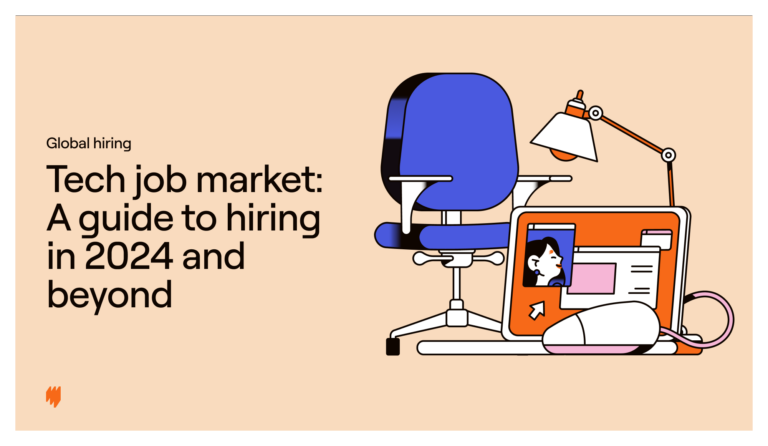Since the pandemic, wage growth has consistently outpaced inflation in the United States. In July 2024, for example, inflation in the US has eased to 2.9% while wages grew by 4.7%.
But what is the reason behind this disparity? And how can hiring managers find and retain the skills they need during this period?
This article breaks down the factors fueling wage inflation and sheds light on one often-overlooked element that plays a significant role in salary increases: the talent crunch. We also provide tips for finding and retaining talent.
Wage inflation is a complex issue
Wage inflation can’t be attributed to a single cause. It’s a culmination of factors that contribute; we outline them here.
Inflation remains a concern
Consumer prices have been up by 3% since June 2023, and the last time the consumer price index (CPI) was below 3% was March 2021.
The ongoing inflationary pressure is a significant concern for business leaders, with 55% of employers reporting inflation as the primary trigger behind salary increases.
Although higher wages can help employees cope with rising costs, they also risk exacerbating the inflation cycle as they increase business costs, leading to higher prices for goods and services.
Employee retention is a challenge
Employee retention has become a concern for 90% of organizations, with voluntary turnover and attrition rates reaching 11%. This is underscored by most job seekers believing they can find better-paying jobs elsewhere.
Currently, 14% of business leaders report losing employees to competitors offering higher salaries. The intense competition is forcing employers to increase pay to retain their most valuable employees.
Attracting top talent is hard
As businesses gear up to expand their workforce in the second half of 2024, 52% of companies intend to add new permanent positions, while another 43% are focused on filling existing vacancies.
Employers are well aware that compensation is a key motivator for job seekers accepting new job offers. So to stay on par with candidate expectations, 55% of organizations are offering higher salary ranges to their new hires.
The overlook contributor to wage inflation: the talent crunch
A lesser discussed yet critical factor behind wage inflation is the ongoing talent crunch–a shortage of skilled workers in the labor market.
Populations are aging, high numbers of people are retiring and fewer young people are entering certain sectors. Often, those in the workforce lack the skills to work alongside emerging technologies.
As businesses compete to attract and retain a limited pool of qualified candidates, they often find themselves needing to offer higher salaries and more benefits.
Attracting candidates during wage inflation
Attracting and retaining candidates during wage inflation requires more than just offering better pay. Here we look at two critical strategies.
Global hiring for a wider talent pool
As the talent crunch feeds into wage inflation, major economies, including Japan, Germany, and the United States, are feeling the impact.
In response, 58% of U.S. employers are turning to global hiring to expand their candidate pool. By extending their search beyond domestic borders, these companies are now able to tap into talent with a much broader range of skills and expertise, often at a lower cost.
This approach addresses the immediate talent shortage and fosters growth by incorporating a wider array of perspectives and knowledge into the organization.
Offering better compensation: A key to retention
The importance of offering enhanced compensation packages to attract and retain top talent cannot be overstated. However, nearly half of employees choose their employer based on the benefits offered, and 82% of workers with benefits packages that meet their needs report intending to stay with their company.
This means organizations need to focus on providing comprehensive benefits that support employees while being compliant with local laws and customs. Multiplier makes it easy for you to provide global benefits to employees in over 150 countries.
How Multiplier can help
Adding multinational hiring to your talent acquisition strategy can help you navigate the talent shortage and keep costs down. However, the mere thought of managing employees all over the world may seem daunting when you factor in aspects such as global compliance, payroll, and onboarding.
That’s where Multiplier comes in. Our EOR and HRIS platform provides a comprehensive solution for your global hiring needs. You can employ in another country without setting up a local entity and we’ll manage core HR functions while you retain complete control over your day-to-day operations.
Want to learn more? Speak with one of our experts.

Beth Longman
Content Writer
Beth Longman is a content writer at Multiplier. With extensive experience in SaaS, she combines data with storytelling to create engaging pieces.





